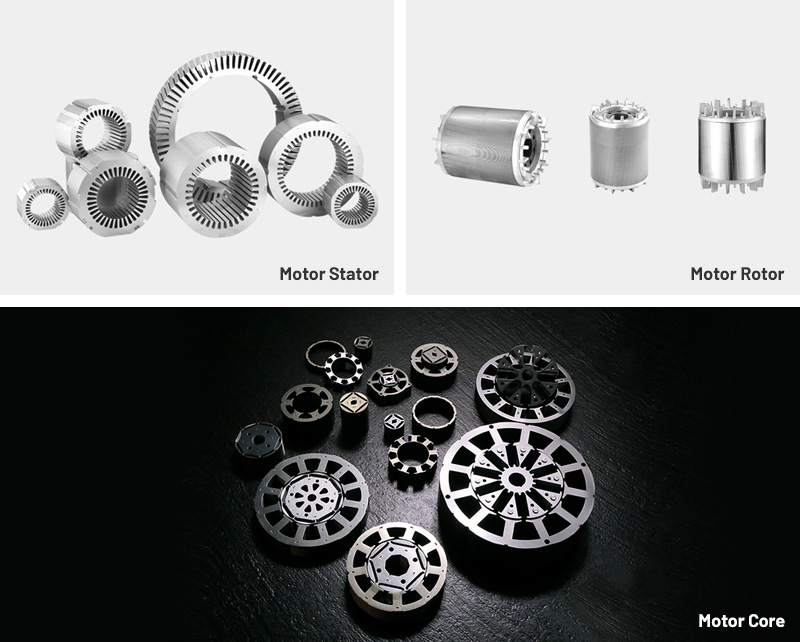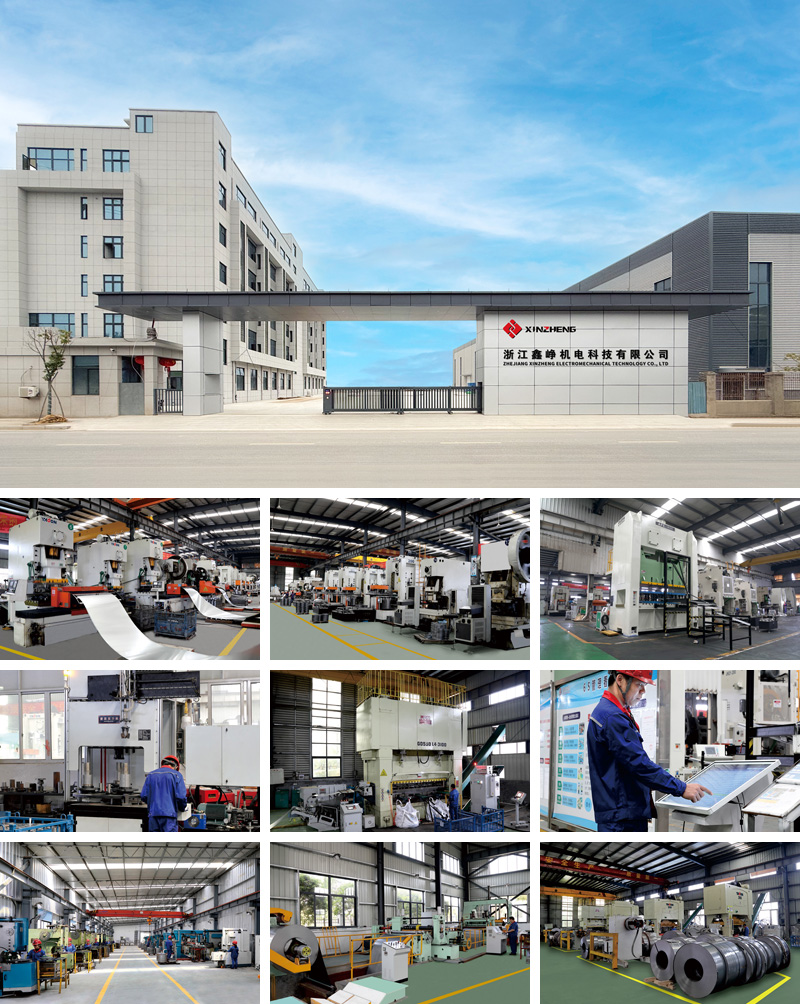The global demand for energy-efficient electric motors continues to grow, driven by industrial automation, rising electricity costs, and increasingly stringent environmental regulations. Electric motors account for a substantial portion of industrial electricity consumption, and optimizing their efficiency has become a strategic priority for manufacturers and plant operators. High-efficiency motors — those meeting or exceeding IE3 standards — deliver measurable reductions in energy consumption while enhancing reliability and longevity.
In this context, rotor design and construction are critical determinants of motor performance. The rotor, as the moving part of an induction motor, interacts with the stator to produce torque. High-quality YE3 series motor rotor laminations play a central role in minimizing losses, reducing operational heat, and ensuring the motor achieves its designed efficiency under continuous industrial workloads.
Electric motor efficiency largely depends on magnetic interactions within the rotor and stator. Two principal sources of energy loss occur within the rotor core: eddy current losses and hysteresis losses. Eddy currents arise from circulating currents induced by alternating magnetic fields, generating heat that reduces efficiency. Hysteresis losses occur due to repeated magnetization cycles of the rotor steel.
Laminating the rotor core into thin, insulated sheets significantly mitigates these losses. Each lamination interrupts eddy current pathways while preserving the magnetic properties of the core material, enabling the rotor to maintain optimal flux distribution and mechanical stability. YE3 series rotor laminations are specifically engineered to support high-efficiency operation, ensuring minimal energy loss, reduced temperature rise, and reliable torque generation across a wide range of operating conditions.
YE3 series rotor laminations are typically constructed from non-oriented electrical steel (silicon steel), known for high magnetic permeability, low hysteresis loss, and appropriate resistivity. A thin insulation coating on each lamination prevents electrical conduction between layers, suppressing eddy currents while maintaining consistent magnetic performance.
Laminations are precision-stamped or laser-cut into the desired rotor core shape, including slots for rotor bars and the shaft bore. The thickness of each sheet, typically 0.35–0.50 mm, is carefully optimized. Thinner laminations reduce eddy currents and heat generation, while sufficient mechanical strength ensures rotor rigidity under high rotational speeds.
Sheet Preparation: Electrical steel coils are unrolled, inspected, and cleaned for uniformity.
Precision Cutting: Laminations are cut using stamping dies or laser cutting to achieve exact dimensions with minimal burrs.
Insulation Coating: Each lamination receives a uniform insulating layer to electrically isolate the sheets.
Stacking and Core Formation: Laminations are stacked concentrically, aligned, and compressed to form a mechanically stable rotor core.
Rotor Bar Insertion and Assembly: Conductive bars are inserted, and the rotor is completed with shaft assembly, ensuring proper balance and mechanical stability.
This precise manufacturing ensures that YE3 series rotor laminations provide optimal magnetic performance, heat management, and mechanical durability under continuous industrial loads.
Several factors directly impact the efficiency and reliability of rotor laminations:
Steel Grade and Magnetic Properties: Premium electrical steel reduces core losses and enhances flux performance. Grain structure and resistivity influence eddy current suppression and hysteresis behavior.
Lamination Thickness and Insulation: Optimal thickness reduces eddy currents without compromising mechanical strength. Insulation integrity is essential to prevent short circuits between laminations.
Dimensional Accuracy: Precise stamping ensures correct slot geometry, bore concentricity, and uniform stack alignment, reducing vibration and torque ripple.
Stacking and Assembly Precision: Proper stacking ensures minimal air gaps, uniform flux distribution, and enhanced mechanical stability at high rotational speeds.
Thermal Management: Reduced core loss and proper heat dissipation maintain insulation integrity and prevent overheating, supporting extended motor life.
Process Consistency: Controlled manufacturing and quality assurance prevent batch-to-batch variability, ensuring predictable performance across multiple motors.
Attention to these factors ensures that YE3 series rotor laminations enable high-efficiency motors to meet operational and regulatory performance standards reliably.
Selecting the right supplier for YE3 series rotor laminations is critical to maintaining motor quality and efficiency. Key evaluation criteria include:
Material Certification: Suppliers must provide documentation of electrical steel grade, thickness, and magnetic loss characteristics.
Manufacturing Capability: Precision cutting, stacking, and assembly capacity, especially for high-volume orders.
Quality Assurance: Non-destructive testing, magnetic loss measurements, and batch traceability are essential.
Compliance: Suppliers should adhere to IE3/IE4 energy efficiency standards and relevant environmental regulations.
Delivery Reliability: Consistent supply ensures uninterrupted production for OEMs and industrial motor manufacturers.
Reliable suppliers reduce risk and ensure that rotor laminations meet design specifications, delivering predictable efficiency and mechanical performance.
Even with high-quality laminations, industrial motor production faces several recurring challenges:
Excessive Core Losses: Poor material quality, incorrect lamination thickness, or inadequate insulation can increase eddy current and hysteresis losses.
Overheating: Inefficient thermal management or prolonged high-load operation may degrade insulation and shorten motor life.
Vibration and Noise: Misaligned stacks or dimensional inaccuracies can generate mechanical vibration, noise, and uneven torque.
Batch Variability: Inconsistent lamination quality can produce motors with varying efficiency, complicating quality control.
Cost vs. Performance Trade-offs: Premium steel and precision manufacturing increase costs, creating pressure to balance material quality with economic feasibility.
Addressing these issues requires strong quality control, supplier oversight, and adherence to engineering best practices.
YE3 series rotor laminations are widely applied in industrial settings that demand high efficiency and reliable performance:
Industrial Pumps and Compressors: Continuous duty operations in chemical plants, water treatment facilities, and HVAC systems.
Fans and Ventilation Systems: Commercial buildings, data centers, and industrial ventilation systems benefit from low-noise, high-efficiency motors.
Conveyor Systems and Material Handling Equipment: Long-running machinery in manufacturing and logistics relies on durable rotor performance.
Renewable Energy and Energy-Efficient Systems: Motors in solar, wind, and hybrid energy systems demand low-loss operation to optimize energy capture and utilization.
Motor Retrofits: Replacing older rotors with YE3 series laminations enhances energy efficiency, reduces heat generation, and extends motor life.
In each scenario, rotor quality directly affects torque consistency, energy consumption, and operational reliability.
The push toward higher-efficiency motors (IE4/IE5) is driving the use of premium electrical steels with refined grain structures, thinner lamination sheets, and higher resistivity to further reduce core losses.
Adhesive bonding and hot curing methods reduce interlaminar gaps, improve thermal conductivity, and enhance structural integrity compared to traditional stacking methods.
Motors increasingly operate under variable-frequency drives. Lamination and slot designs are adapting to fluctuating flux densities, thermal cycling, and torque demands, requiring precision engineering and flexible manufacturing.
Buyers demand traceable materials, batch-level documentation, and environmental compliance certifications. Suppliers offering transparent records gain competitive advantages in global markets.
Computer-controlled stamping, automated stacking, and non-destructive testing improve precision, reduce variability, and ensure consistent rotor performance across high-volume production.
Q: Why are rotor laminations essential for high-efficiency motors?
A: Laminations reduce eddy current and hysteresis losses, minimize heat generation, and enable the rotor to maintain optimal torque and energy efficiency. Solid rotors without laminations experience higher energy loss and thermal stress.
Q: How does lamination thickness affect performance?
A: Thinner laminations reduce eddy current losses but must retain mechanical strength. Optimized thickness balances efficiency gains with rotor rigidity and manufacturability.
Q: What role does insulation play in rotor laminations?
A: Insulation between lamination sheets prevents interlaminar currents, maintaining magnetic efficiency and reducing heat buildup, which supports longer motor life.
Q: How important is supplier selection?
A: High-quality suppliers ensure consistent material properties, precise manufacturing, and regulatory compliance — all critical for achieving the designed energy efficiency and motor performance.
YE3 series high-efficiency motor rotor laminations are a pivotal component in modern energy-efficient motors. Precision-engineered from premium electrical steel, with optimal thickness, insulation, and stacking, these laminations reduce energy loss, control heat, and maintain mechanical integrity. For OEMs and industrial motor manufacturers, sourcing high-quality rotor laminations and enforcing strict quality controls ensures that motors achieve IE3 efficiency standards, reliable performance, and extended service life. As industrial energy regulations tighten and efficiency demands grow, YE3 rotor laminations will remain central to sustainable, high-performance motor solutions worldwide.
Product Category

Comprehensive Strength


Copyright © Zhejiang Xinzheng Electromechanical Technology Co., Ltd. All Rights Reserved.
This website uses cookies to ensure you get the best experience on our website.